What is architectural mesh and what is it used for?
Architectural mesh products are widely considered to be one of the most versatile and adaptable products available to designers, used to achieve a wide range of functional requirements with the added benefit of innately unique aesthetic qualities and extensive design possibilities. The beauty of the expanding process is the ease with which the characteristics of the material can be transformed. From a single tool, altering the aperture and the strand of a mesh allows us to create the optimum reflectivity, solar shading, airflow and translucence for each architectural application.

Facades
Architects design facades and cladding with the ultimate vision to create a lasting impression and in some cases, they are maximising the design potential of materials and finishes to communicate a specific identity or theme. Architectural mesh products have all the qualities needed to deliver lasting visual impact, with other added functional benefits that are particularly well suited to the exterior of a building. Suitable to be formed, folded, fabricated and fixed in various configurations, mesh material is often selected to meet building technical compliance requirements, including:
- Light transmission
- Climate control
- Solar shading
- Maintenance and servicing
- Light reflection
Balconies & Balustrades
The benefits of using architectural mesh can be applied in equal measure to perimeter detailing, landscaping and interior design. Balustrading, used internally and externally, often features mesh infill panels as an integral part of their primary construction. Examples of typical applications are: balcony cladding, bridges, public walkways and stairway enclosures.
By altering aperture shape and size, as well as strand dimensions, architectural mesh provides unrivalled flexibility in achieving specific free open area criteria to meet airflow requirements and can also satisfy stringent health and safety guidelines in high security areas.
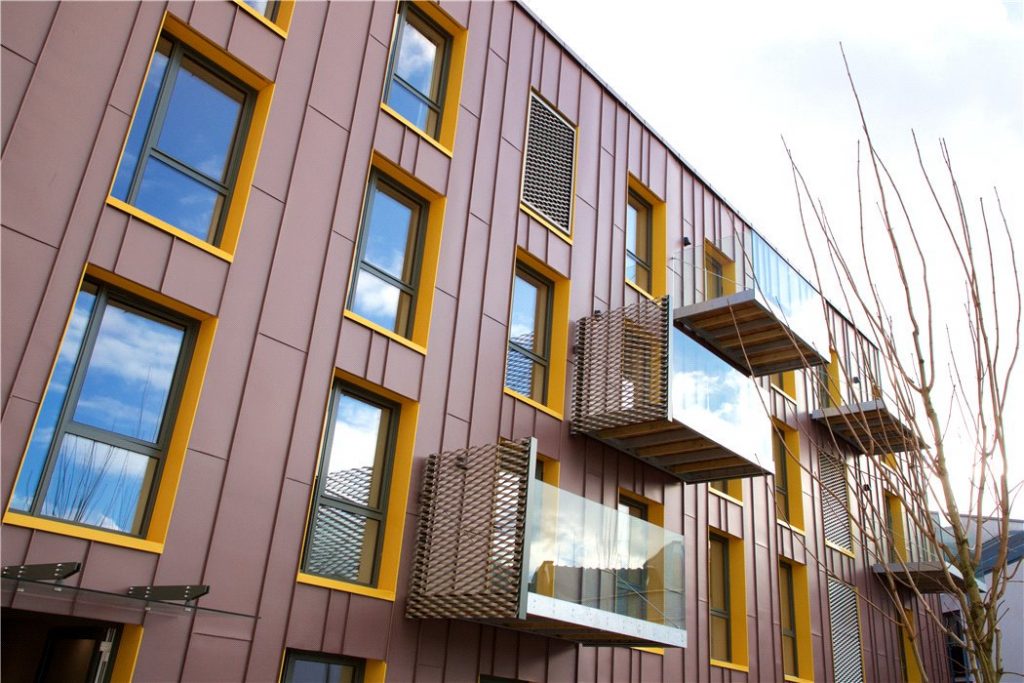

Balconies & Balustrades
The benefits of using architectural mesh can be applied in equal measure to perimeter detailing, landscaping and interior design. Balustrading, used internally and externally, often features mesh infill panels as an integral part of their primary construction. Examples of typical applications are: balcony cladding, bridges, public walkways and stairway enclosures.
By altering aperture shape and size, as well as strand dimensions, architectural mesh provides unrivalled flexibility in achieving specific free open area criteria to meet airflow requirements and can also satisfy stringent health and safety guidelines in high security areas.
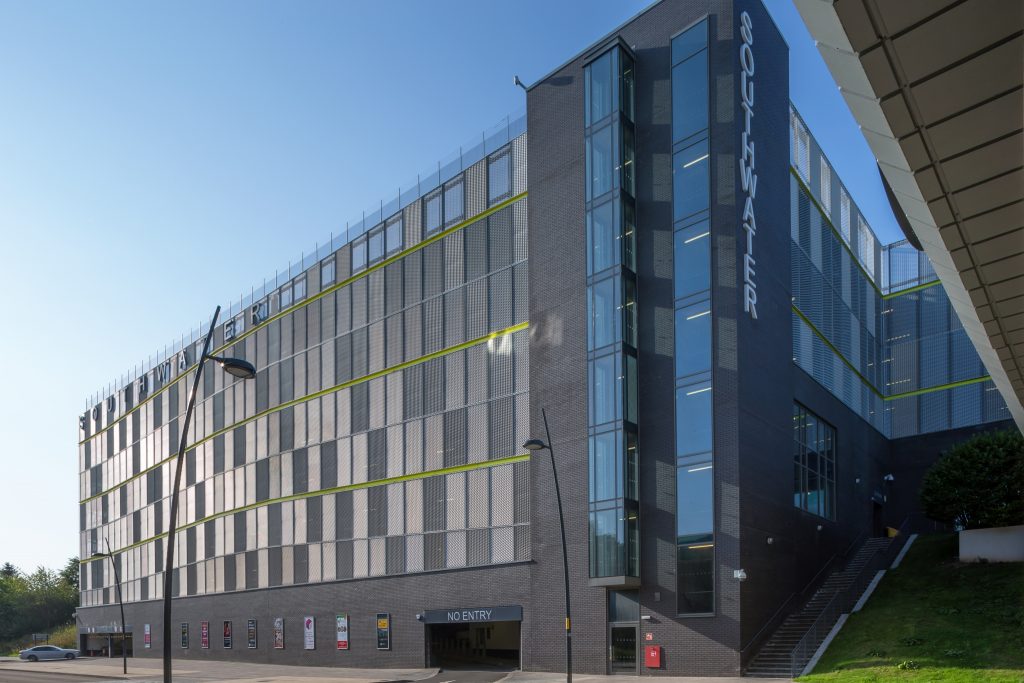
Car Park Cladding
Architectural mesh has been widely used for cladding car parks for many years, however the designs and applications have evolved significantly in recent years, with more creative, eye-catching aesthetic effects emerging in projects all across the globe.
Mesh is a mainstay in this sector for good reason, as it meets a set of safety and practicality criteria that are quite unique to car park settings. Impressive strength and durability characteristics mean it is ideal for both security and falls prevention when used at height. Vehicles can be safely housed in a multi storey car park clad with architectural mesh that allows open air flow, light transmission and visibility with a great degree of flexibility to meet individual project requirements.
Materials used for Architectural Mesh Products
- Aluminium
Aluminium is an ideal material for architectural applications. Depending on the grade and gauge of aluminium selected, it has excellent durability properties and is very adaptable to a wide range of fabrication, perforating and stretching during production. Although aluminium is non-ferrous, in architectural applications a protective coating or decorative finish is typically applied to the mill finish material post fabrication and can achieve stunning visual effect. - Corten Steel
Corten, also known as weathered steel, is a corrosion resistant grade of steel made by adding alloy elements to the material surface. The resulting effect is the formation of a protective rust ‘film’ layer – the trademark ‘rusty steel’ look – which exudes fascinating aesthetic appeal and requires little to no long-term maintenance. When specifying this material, it’s important to note that the rust finish develops gradually over time and that there will be an interim period where architectural mesh made from this material may appear streaky and yellowish, this is a natural stage of the weathering process. - Copper
Copper is often considered to be a more traditional building material; however, its enduring characteristics also make it a great candidate for modern applications such as architectural mesh. Highly durable and malleable, copper is well suited to perforation and forming and also incredibly versatile in how it can be used. As it’s a natural metal, over time the material surface will develop through oxidation to create a patinated and unique finish.
Architectural Mesh Coatings & Finishes
- Anodising Aluminium
The visual appeal of anodised aluminium is contingent on a series of entirely unique properties. Anodising is a transparent finish that permeates the surface of the metal, this process retains and enhances the aesthetic qualities of aluminium and creates a protective layer that is totally UV resistant, with over 40 years proven durability. Through electro-colouring and combination colouring processes, a range of anodised colour variations and effects, from Anolok Bronze to Organic Red can be applied to our aluminium architectural mesh to stunning effect. - Powder Coating Aluminium
Specially formulated for the built environment, architectural powder coatings produced by our inhouse Finishes division are high quality, durable and consistent in nature. The powder coating process operates to Qualicoat standard to guarantee chemical resistance, excellent durability and mechanical performance and is considered a more sustainable alternative to liquid based PVDF paint. When combined with the undulating geometry of architectural mesh, powder coatings offer an almost limitless palette of colour, texture, gloss and design potential.
Popular Architectural Mesh Patterns
Vision Fehn
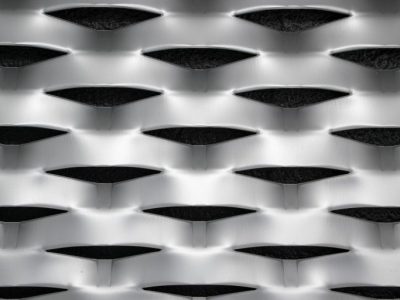
Long Way of Mesh: 114mm
Short Way of Mesh: 48mm
Gauge: 3mm
Strand: 20mm
Vision Trafford
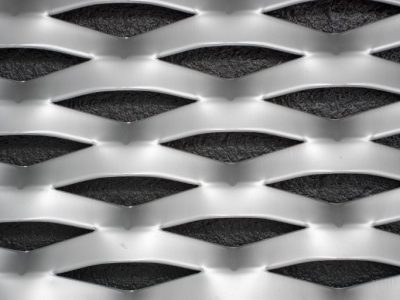
Long Way of Mesh: 122mm
Short Way of Mesh: 50mm
Gauge: 3mm
Strand: 18mm
Vision Neutra
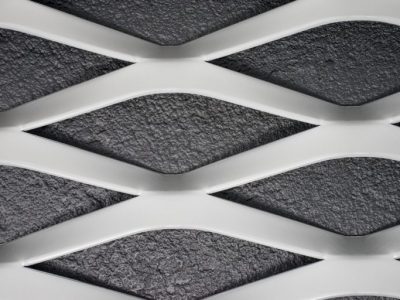
Long Way of Mesh: 203mm
Short Way of Mesh: 76mm
Gauge: 3mm
Strand: 20mm
Vision Webb
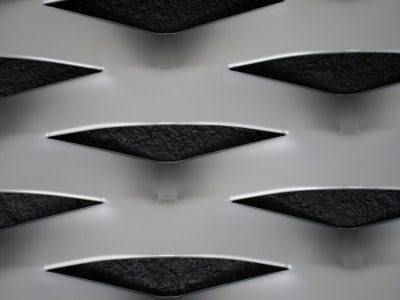
Long Way of Mesh: 203mm
Short Way of Mesh: 76mm
Gauge: 4mm and 5mm
Strand: 30mm